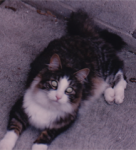I have central sleep apnea and was having 39 apneas per hour. This took several years to recognize and resulted in severe anxiety/panic problems that I’d never had before in 68 years.
I am on day three with Resmed Aircurve 10 and the N20 nasal mask. The nasal mask resulted in less swallowed air than the face mask and I slept from 9:30-3:30 pretty well but then I struggled to time my breathing to the machine.
I am just as tired and dull this morning as ever.
It seems that when the machine forces a breath with a blast of air that it will arouse you just as in the natural state except that you’ll not be hypoxia so often. How do you ever overcome the fatigue of restless sleep? I assume it must get better or they wouldn’t use them. How long is typical
?
Getting used to ASV machine
Re: Getting used to ASV machine
First thing to know is that you should breathe normally - the machine will adapt to you, not the other way around.
Second thing is that if you post results of Oscar (see top posts) we can see what's going on and help advise if changes are needed to the machine or your routine. And if you take meds for anything could you also say which please? And try to stay in this thread with everything so we can follow the story.
Second thing is that if you post results of Oscar (see top posts) we can see what's going on and help advise if changes are needed to the machine or your routine. And if you take meds for anything could you also say which please? And try to stay in this thread with everything so we can follow the story.
Re: Getting used to ASV machine
The ASV machine can be a bit difficult to adapt to because of the very thing you need to help you breathe when you don't breathe on your own....that big push of air.
The machine does a sort of rolling average of what it thinks is supposed to be your normal respiration rate and when you don't breathe enough on your own it kicks in to help you.
One thing you can do is when you first start up the machine make a point to take very slow breaths....very even and slow breaths so that when the machine monitors your breathing it has a baseline of a nice low number to try to maintain and won't kick in so often.
Eventually two things adapt....your brain adapts to that big push of air and the machine learns to slow down that push but with your help. So when you start during the night.....nice slow even breaths so the machine sets up a nice low back up rate and if you wake during the night and it's pushing to fast....turn the machine off and then right back on again and force it to re-calibrate your backup rate and again you force yourself to take nice slow even breaths.
If your back up rate average is lower then it won't push that big burst so quickly.
Eventually the brain will come to grips with this new way of doing things and won't be so quick to wake you up but it does take time. The machine itself doesn't learn to adapt to you except when it is establishing the back up rate average and you have some input in that regard while awake and the machine is in the process of setting the auto back up rate.
You go real slow and deliberate and the machine thinks that is what it needs to match.
Each time you turn off the machine it will be forced to setup a new back up rate. It doesn't ever remember anything once you turn it off.
The machine does a sort of rolling average of what it thinks is supposed to be your normal respiration rate and when you don't breathe enough on your own it kicks in to help you.
One thing you can do is when you first start up the machine make a point to take very slow breaths....very even and slow breaths so that when the machine monitors your breathing it has a baseline of a nice low number to try to maintain and won't kick in so often.
Eventually two things adapt....your brain adapts to that big push of air and the machine learns to slow down that push but with your help. So when you start during the night.....nice slow even breaths so the machine sets up a nice low back up rate and if you wake during the night and it's pushing to fast....turn the machine off and then right back on again and force it to re-calibrate your backup rate and again you force yourself to take nice slow even breaths.
If your back up rate average is lower then it won't push that big burst so quickly.
Eventually the brain will come to grips with this new way of doing things and won't be so quick to wake you up but it does take time. The machine itself doesn't learn to adapt to you except when it is establishing the back up rate average and you have some input in that regard while awake and the machine is in the process of setting the auto back up rate.
You go real slow and deliberate and the machine thinks that is what it needs to match.
Each time you turn off the machine it will be forced to setup a new back up rate. It doesn't ever remember anything once you turn it off.
_________________
| Machine: AirCurve™ 10 VAuto BiLevel Machine with HumidAir™ Heated Humidifier |
| Additional Comments: Mask Bleep Eclipse https://bleepsleep.com/the-eclipse/ |
I may have to RISE but I refuse to SHINE.
- Respirator99
- Posts: 389
- Joined: Mon Jul 05, 2021 12:39 am
- Location: Australia
Re: Getting used to ASV machine
That's not strictly correct for Resmed ASV. The machine monitors your minute ventilation and adjusts for that. MV is a product of breathing rate (how fast you breathe) and tidal volume (how deep you breathe). The ASV actually adjusts the inhale pressure (IPAP) on a breath-by-breath basis which tends to even out any pressure fluctuations. This monitoring and adjustment goes on all night and is not solely due to any initial breathing condition when you're going to sleep. For this reason I don't think it's a good idea to hit the off button if you get woken by pressure during your sleep. Just blow back hard and the machine will recalibrate.The machine does a sort of rolling average of what it thinks is supposed to be your normal respiration rate and when you don't breathe enough on your own it kicks in to help you... The machine itself doesn't learn to adapt to you except when it is establishing the back up rate average...
Julie and Pugsy are both correct when saying that fairly slow even breaths should be achieved during the transition to sleep. Sometimes as you drop off, your breathing will become a bit ragged and the machine will give you extra pressure; if this happens, blow back hard and the machine will recalibrate.
I don't know about that. I started on an APAP, went to a Philips ASV then finally to Resmed ASV - initially S9 and now Aircurve 10. The Philips was a mongrel of a thing and very definitely did try to force you to adapt to it. By contrast the Resmeds are extremely comfortable and adapt to you, not the other way round.The ASV machine can be a bit difficult to adapt to ...
To JGV: You haven't told us what settings you're on or shown us any results. This can make a big difference. Please install and use Oscar (if you haven't already) and share some daily pages with us so we can have a more detailed look at the problem.
_________________
| Machine: ResMed AirCurve 10 ASV Machine with Heated Humidifier |
| Mask: ResMed AirFit™ F20 Full Face CPAP Mask with Headgear |
* Download Oscar
* Oscar help
* An alternative to Oscar - try SleepHQ
I have no medical training or qualifications. Take my advice for what it's worth.
* Oscar help
* An alternative to Oscar - try SleepHQ
I have no medical training or qualifications. Take my advice for what it's worth.









